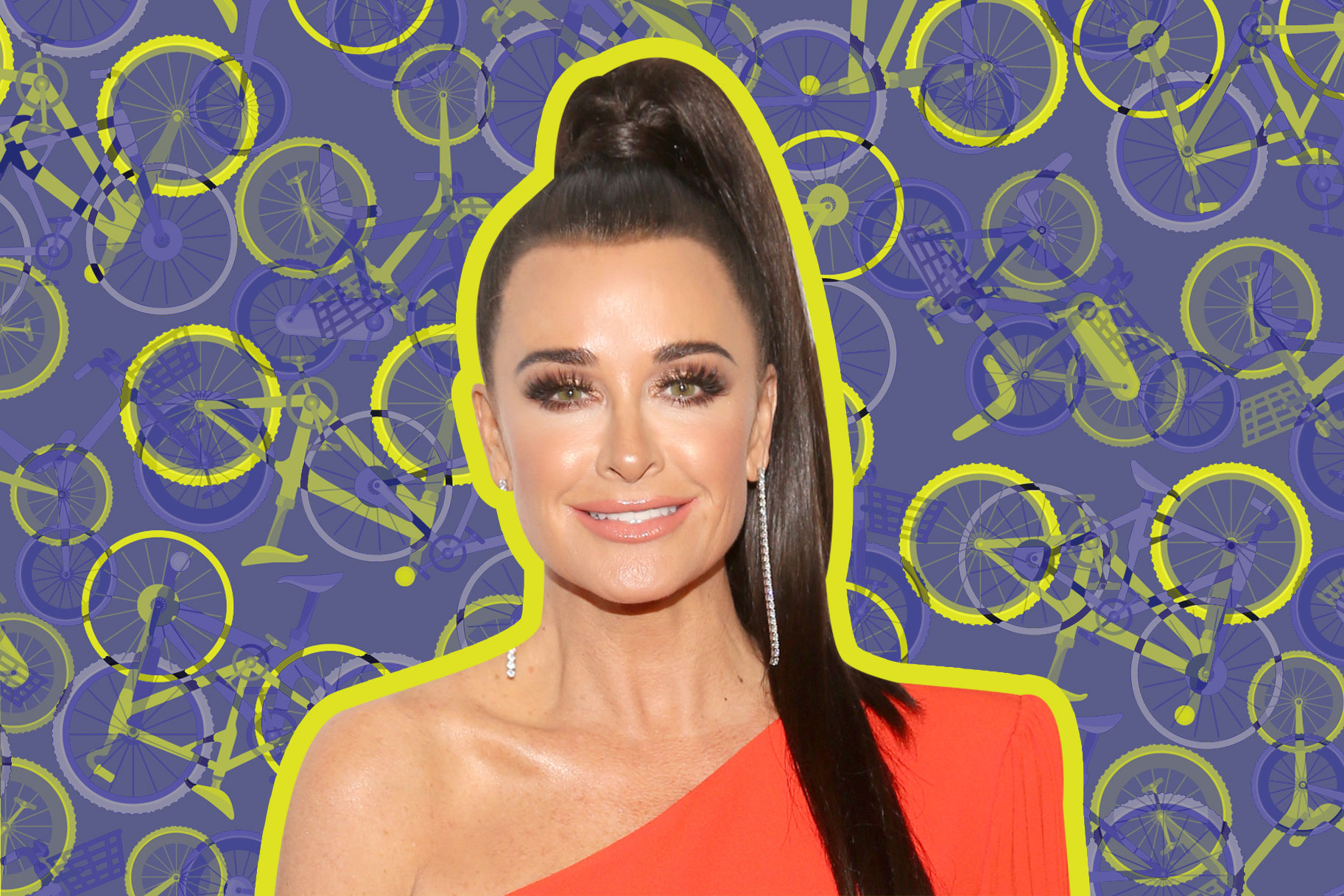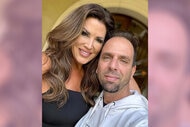
Create a free profile to get unlimited access to exclusive videos, sweepstakes, and more!
Yes, SoulCycle Can Actually Help Kyle Richards Overcome Her Crippling Anxiety
"For me, if I want to feel good and, you know, if I’m stressed, it’s exercise, exercise, exercise,” Kyle Richards explained.

Kyle Richards has opened up about how challenging it is to live with anxiety, recently explaining that Season 9 proved a rough one for her and her mental state. The Real Housewives of Beverly Hills mom fought with Lisa Vanderpump, saw her daughter Sophia Umansky prepare to leave home for college, and she moved into a new home. Understandably, those are all major triggers for an anxiety disorder.
"Unless you struggle with it, it’s hard for people to understand," she tweeted. "People see me smiling [and] laughing but don’t see the other times."
But, she says, she exercised her way through it — specifically by doing SoulCycle, which she credits for helping keep her anxiety under control.
In a recent blog on Bravotv.com, Kyle explained: "Teddi [Mellencamp Arroyave] comes to visit me at my new home (which I am finally settling into) to workout. We immediately start to laugh about everything. That’s what we do. Yes, of course, I think I’m dying again. I laugh about it, but the truth is my anxiety was through the roof during this time," she wrote. "My daughter Sophia was leaving home for the first time for college in a couple of weeks. If you know me by now, that is very difficult for me. I don’t do well with my children leaving the nest. On top of that, my one eye wasn’t opening all the way, and I had yet to figure out what it was. STAY AWAY FROM WEB MD!"
At the RHOBH Season 9 premiere party on February 12, she revealed she was coping with all the stress by hitting SoulCycle classes. "For me, if I want to feel good and, you know, if I’m stressed, it’s exercise, exercise, exercise,” she said. “So I did my boxing class today, got out all my anxiety. Yesterday was SoulCycle. Tomorrow I’ll be in SoulCycle again.”
She’s choosing wellness, and exercise does help ease anxiety, as there are many physical symptoms of panic and anxiety. “Some of the most common of these symptoms include muscle tension and trembling,” reports VeryWell. “Research has shown that maintaining a regular exercise plan can actually provide relief for many of the symptoms of panic disorder and other anxiety-related conditions.”
If you exercise regularly, the way it helps not just your body, but your mind is this: “Exercise has been found to enhance mood, improve energy levels, and promote quality sleep. For people with panic disorder and other anxiety-related conditions, exercise can be a proactive way to release pent-up tension and reduce feelings of fear and worry. Additionally, a regular exercise program can help ease symptoms of other common co-occurring conditions, such as IBS or depression.”
Exercise can also help “alleviate common issues that are often brought on by nervousness and anxiety.” What it does is reduce tightness and tension held throughout the body. “Second, regular exercise can assist in producing endorphins, the body’s natural mood-enhancing chemical that is involved in fighting off pain and stress. Studies have shown that exercise decreases a person's sensitivity to the body's reaction to anxiety, as well as decreases the intensity and frequency of panic attacks in some cases. Last, the reduction of stress hormones that can occur from exercise may help improve one’s sense of well-being.”
Moving your body also reduces fatigue, improves alertness and concentration, and enhances overall cognitive function. “If your body feels better, so does your mind. Exercise and other physical activity produce endorphins — chemicals in the brain that act as natural painkillers — and also improve the ability to sleep, which in turn reduces stress,” reports the Anxiety and Depression Association of America. “Scientists have found that regular participation in aerobic exercise has been shown to decrease overall levels of tension, elevate and stabilize mood, improve sleep, and improve self-esteem. About five minutes of aerobic exercise can begin to stimulate anti-anxiety effects.”
According to the ADAA, anxiety disorders affect 40 million adults, and are the most common psychiatric illnesses in the U.S.
And if you can’t swing boxing or SoulCycle, psychologists studying how exercise relieves anxiety and depression “suggest that a 10-minute walk may be just as good as a 45-minute workout.”
“Science has also provided some evidence that physically active people have lower rates of anxiety and depression than sedentary people. Exercise may improve mental health by helping the brain cope better with stress. In one study, researchers found that those who got regular vigorous exercise were 25 percent less likely to develop depression or an anxiety disorder over the next five years.
“According to some studies, regular exercise works as well as medication for some people to reduce symptoms of anxiety and depression, and the effects can be long lasting. One vigorous exercise session can help alleviate symptoms for hours, and a regular schedule may significantly reduce them over time.”


















